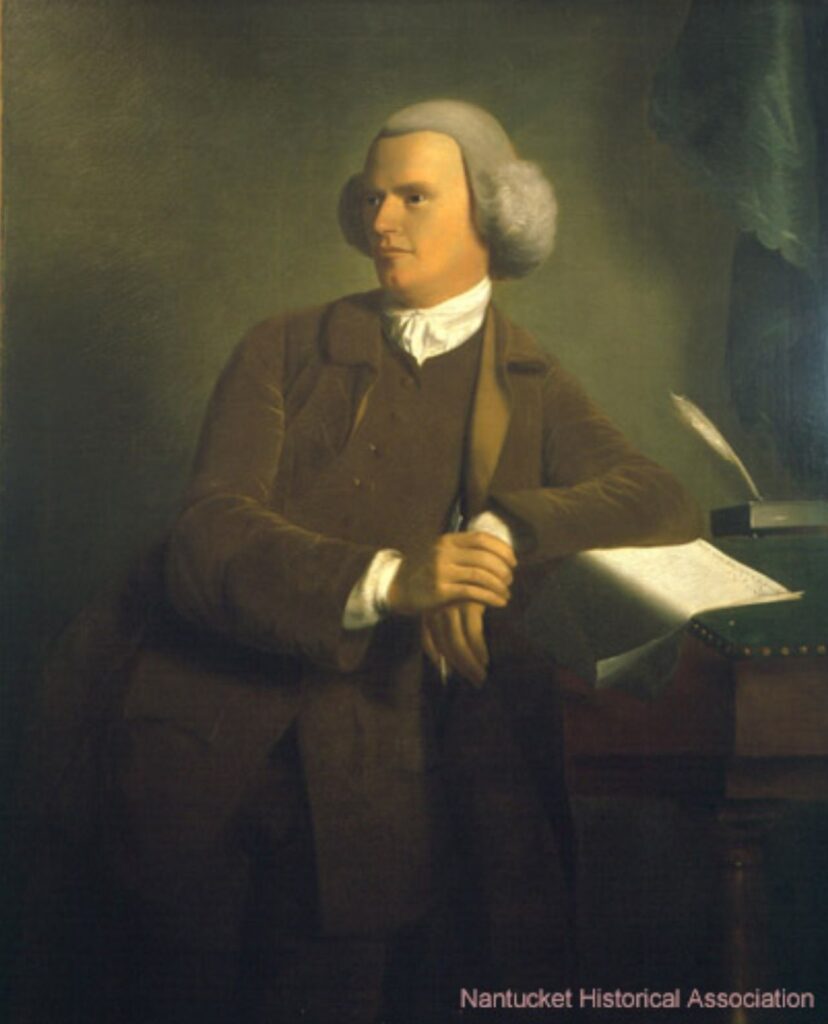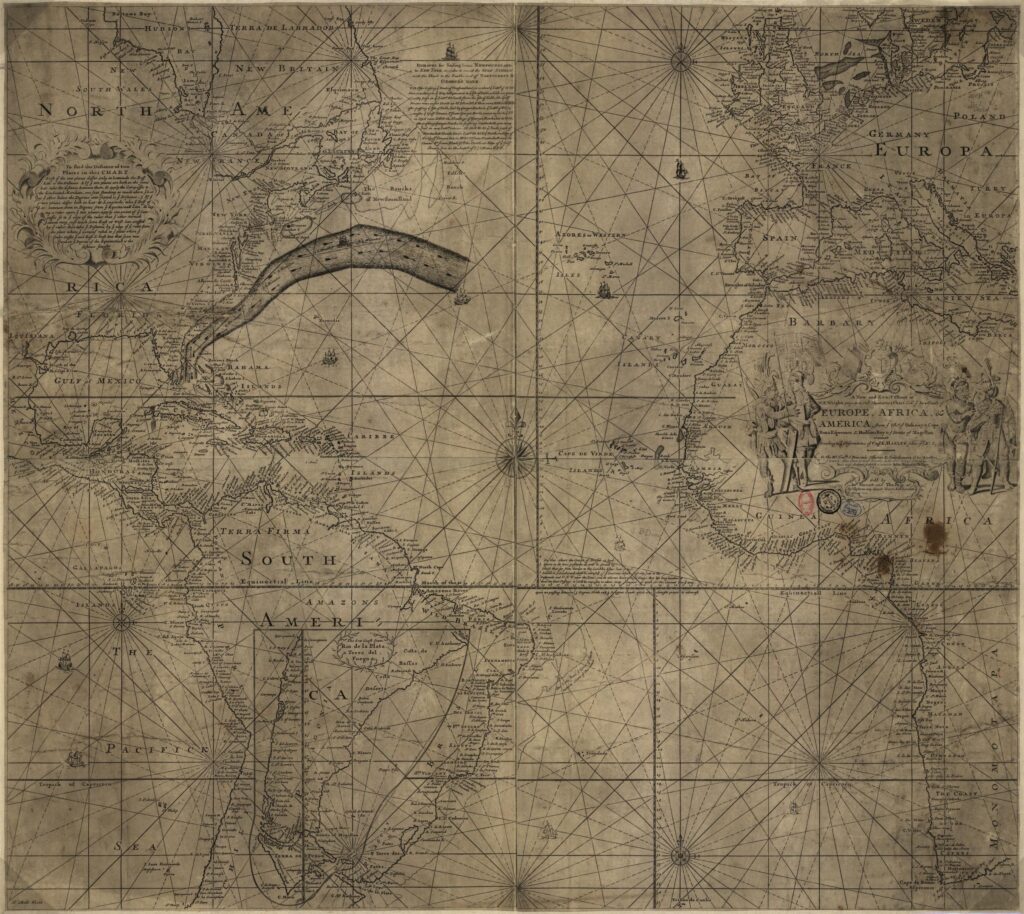

Timothy Folger was born in 1732 to Abishai Folger and Sarah Mayhew. In 1753, he married Abial Coleman, daughter of Barnabas Coleman and Rachael Hussey. The couple had seven children: Syllvanus, Abial, Sally, Lucretia, Margaret “Peggy”, Timothey, and Benjamin Franklin, named after his cousin, the founding father.
As a skilled mariner from Nantucket, Folger was involved in the whaling industry. It was during his time as a Nantucket whaler that he became well-acquainted with the Gulf Stream, a warm and strong ocean current.
In 1768, Benjamin Franklin, then in London, received a visit from his cousin Timothy Folger, who captained a merchant ship. Folger’s knowledge of the Gulf Stream prompted Franklin to inquire about the prolonged travel time of British mail packet ships compared to regular merchant vessels. Franklin and Folger collaborated to name and map the Gulf Stream for the first time, publishing their findings in the Transactions of the American Philosophical Society in 1769.
In September 1785, Folger, along with Samuel Starbuck and other associates, relocated to Dartmouth, Nova Scotia, intending to continue the whale fishery. They surveyed land in the Township of Dartmouth, acquiring two tracts totaling 2156 acres. The relocation of the Nantucket Whaling Company to Dartmouth marked the town’s first major industry.
However, in 1792, Folger and Starbuck departed for Milford Haven in Great Britain, where they hoped to continue their whale fishery with greater facilities. They were invited by British authorities to establish a whaling center in Milford Haven. Financial assistance, including pensions for Folger and Starbuck, was provided, and the first 15 families arrived in 1792.
Timothy Folger, now settled in Milford Haven, continued his involvement in the whale fishery. He became known as a whalebone cutter in his later years, contributing to the processing of valuable whalebone used in various products. His wife Abiel kept a detailed diary, providing insights into their daily lives and activities.
Timothy Folger died in 1814 in Milford Haven, leaving behind a legacy as a skilled mariner, navigator, and cartographer. His contributions to navigation, alongside his cousin Benjamin Franklin, have had a lasting impact on maritime history. Folger’s involvement in the whaling industry and his role in the settlement of Dartmouth further attest to his significance in shaping both local and maritime communities. He was buried in Milford Haven’s Quaker burial ground, leaving behind a rich legacy of exploration, innovation, and industry.
“Timothy Folger (1732 – 1814)” https://www.wikitree.com/wiki/Folger-296,
“Benjamin Franklin Was the First to Chart the Gulf Stream, Franklin’s cousin, Timothy Folger, knew how the then-unnamed current worked from his days as a whaler” https://www.smithsonianmag.com/smart-news/benjamin-franklin-was-first-chart-gulf-stream-180963066/
“Former home of whale-ship captain Timothy Folger, Milford Haven” https://historypoints.org/index.php?page=former-home-of-whale-ship-captain-timothy-folger-milford-haven
